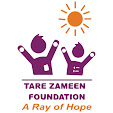WHAT IS DIGITAL LITERACY?
Digital Literacy is the individual’s ability to comprehend and engage in information on various digital platforms. It is the individual’s ability in using technology to produce, compose and type text, content, and audio and visual material.
It is a multidisciplinary field where even the knowledge of social sciences is required for a smoother understanding. The term, now, is used both in India and all over the world to describe one’s grasp of technology and digital information.
DIGITAL LITERACY IN INDIA
The term digital literacy gained traction in India with Prime Minister Narendra Modi’s Digital India campaign. Launched on July 1st, 2015, the campaign was designed with the aim to provide the country with better technological infrastructure and advanced internet connectivity. It was launched in order to make the country more digitally empowered and to enable civil society to reach state services electronically, thereby, hoping to make the bureaucratic processes faster.
Digital India
Services such as the National e-Governance Plan, which included MyGov.in, UMANG (Unified Mobile Application for New-age Governance), Swachh Bharat Mission mobile app, etc, and Digital Locker were initiated under this campaign.
In an attempt and with the goal to make 6 crore rural households, with at least one member from every household, digitally literate by 2020, the Pradhan Mantri Gramin Digital Saksharta Abhiyan was initiated under the Digital India program of PM Modi. It intends to make the rural population use digital literacy to solve their everyday life problems and gain opportunities that can help the rural community.
DIGITAL DIVIDE
Digital Divide is the disparities in access to information and communications technologies (ICT). This may be due to social, geographical, geopolitical, or economic causes. The digital divide is one of the major hurdles of digital literacy.
The most obvious reason for the digital divide is geography. Connectivity is shabby in areas that are far-flung and those that suffer from unpredictable weather. Apart from this, accessibility depends much on the economic capabilities of the individual. In India, where there is an apparent son preference, gender also becomes one of the determiners for the existence of the digital divide. Some people also find it difficult to catch up with digital literacy due to their age and their lifelong in-exposure to digital media.
SIGNIFICANCE OF DIGITAL LITERACY
1) It expands our knowledge of what content to consume and what to discard. While the internet is a vast encyclopedia of information, not all of this information is valid or essential to our use.
2) It teaches us about internet safety, including how to create safe passwords and how to use privacy settings so that our personal information remains secure. It also teaches us the difference between the use and misuse of social media and makes us aware and wary about the perils of cyber-bullying
3) In today’s world, almost every career requires digital literacy and technological prowess. Lack of digital literacy will prove to be a great disadvantage in case one chooses a career path that requires a certain degree of digital literacy.







0 Comments